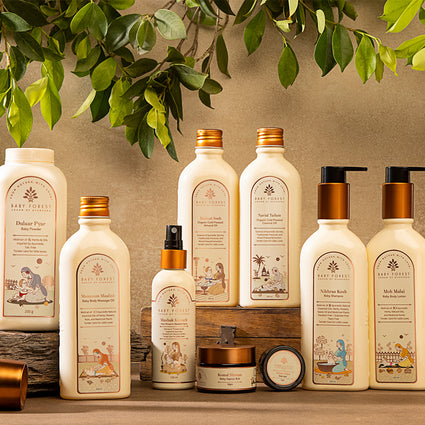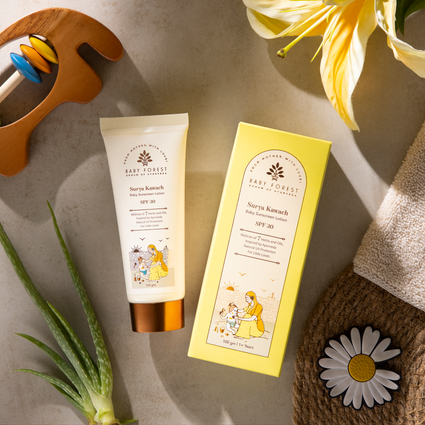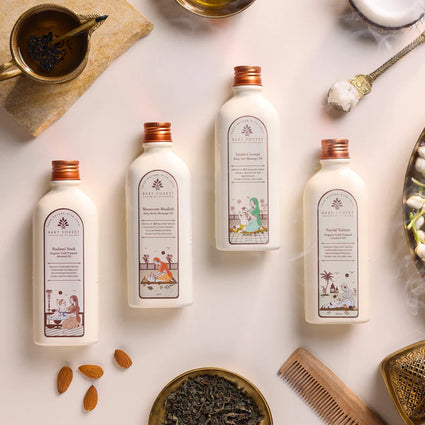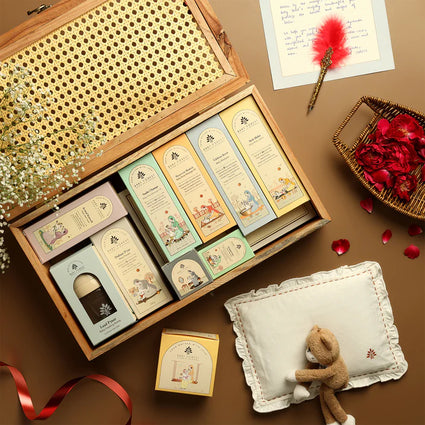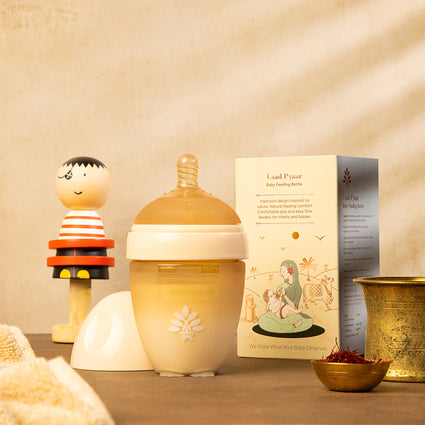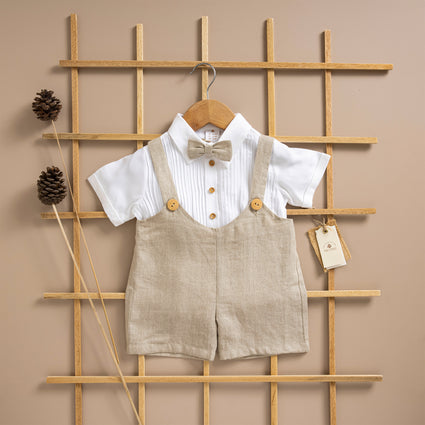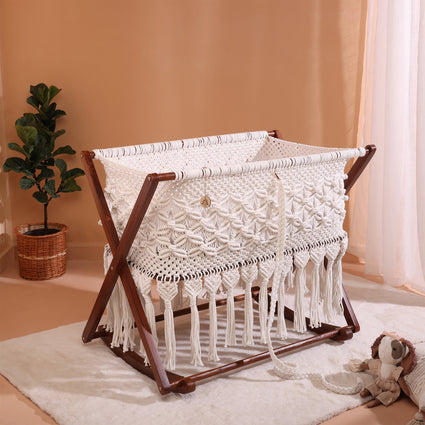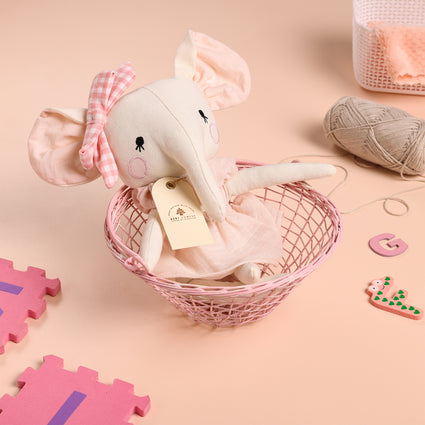Baby Care & Parenting Blogs
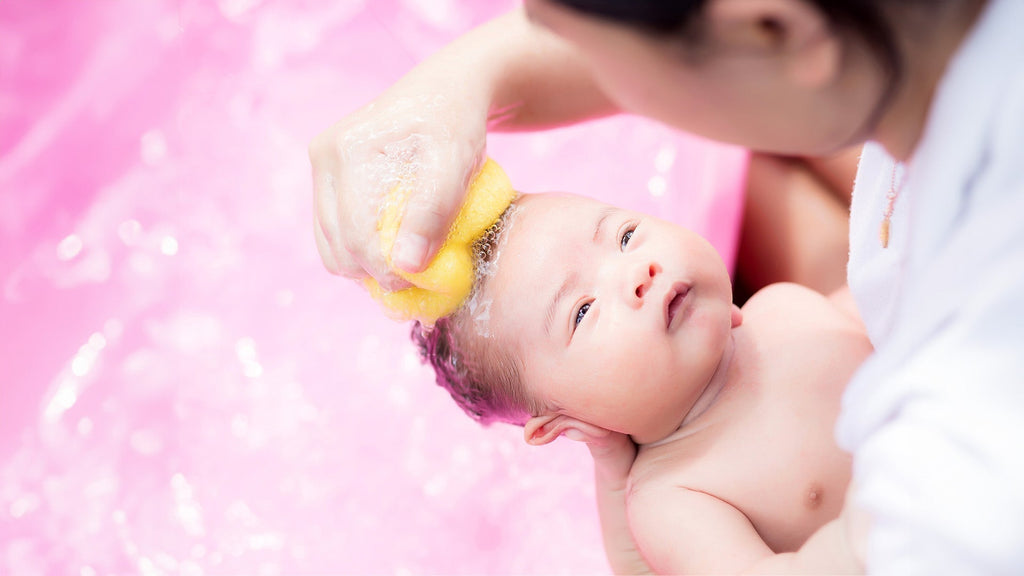
A Comprehensive Guide to Wash Your Baby’s Hair
Washing your baby’s hair might seem daunting, especially for new parents. However, with the right techniques and products, it can be a gentle and enjoyable experience for you and your baby. This guide will provide detailed steps on how to properly wash your baby’s hair, ensuring their scalp remains healthy, and their hair stays soft and clean.
Why Washing Your Baby’s Hair is Important
Regularly washing your baby’s hair is essential for several reasons:
-
Hygiene
It helps to remove dirt, sweat, and excess oils that can accumulate on the scalp. -
Comfort
A clean scalp reduces the likelihood of itchiness and discomfort. -
Health
Proper washing can prevent conditions like cradle cap, a common infant scalp issue.
How Often Should You Wash Your Baby’s Hair?
The frequency of washing your baby’s hair depends on their age and hair type:
-
Newborns
For newborns, washing their hair once or twice a week is sufficient since they don’t produce much oil. -
Older Babies and Toddlers
As your baby grows and becomes more active, you might need to wash their hair 2-3 times a week or as needed.
Choosing the Right Baby Shampoo
Selecting the right shampoo is crucial for maintaining your baby’s hair and scalp health. Here’s what to consider:
-
Gentle Formula
Opt for baby shampoos that are specifically formulated for babies. These are usually tear-free and mild, avoiding harsh chemicals that can irritate the scalp. -
Organic Baby Shampoo
Organic baby shampoos are an excellent choice as they are free from synthetic fragrances, dyes, and harmful chemicals. They often contain natural ingredients like aloe vera, coconut oil, and neem extract, which are soothing and nourishing for your baby’s delicate scalp.
Why Choose Organic Baby Shampoo?
-
Safe Ingredients
Organic baby shampoos are made from natural, safe ingredients less likely to cause allergic reactions or skin irritation. -
Eco-Friendly
These products are produced using environmentally friendly practices and are biodegradable, reducing their environmental impact. -
Nourishing
Natural organic shampoo ingredients can nourish your baby’s hair and scalp, promoting healthy growth.
Preparing for the Hair Wash
Before you start washing your baby’s hair, gather all necessary supplies to ensure a smooth process:
-
Baby Shampoo
Choose a gentle or organic baby shampoo. -
Soft Washcloth or Sponge
For gentle cleansing. -
Cup or Rinse Bottle
For pouring water over your baby’s head. -
Towel
A soft, absorbent towel for drying your baby’s hair.
Steps to Properly Wash Your Baby’s Hair
1. Create a Calm Environment:
Choose a warm, comfortable room for the bath. Make sure you have everything within arm’s reach to avoid leaving your baby unattended.
2. Support Your Baby’s Head:
Gently cradle your baby’s head with one hand while supporting their body with the other. You can either hold them in your arms or lay them on a padded surface like a bath cushion or a sink insert.
3. Wet Your Baby’s Hair:
Using a cup or rinse bottle, gently pour warm water over your baby’s head. Ensure the water is at a comfortable temperature (around 37-38°C or 98-100°F).
4. Apply Shampoo:
Squeeze a small amount of baby shampoo onto your hand and gently massage it into your baby’s scalp using your fingertips. Be gentle to avoid causing any discomfort. Focus on the scalp rather than the hair itself, as the scalp is where oils and dirt accumulate.
5. Rinse Thoroughly:
Rinse your baby’s hair thoroughly with warm water, ensuring all the shampoo is washed away. Residual shampoo can cause irritation or dryness.
6. Dry Gently:
Wrap your baby in a soft, absorbent towel and gently pat their hair dry. Avoid rubbing, as this can damage their delicate hair and scalp.
Tips for a Stress-Free Hair Washing Experience
Make It Fun:
Turn hair washing into a fun activity by singing songs, talking to your baby, or using bath toys to distract them.
Be Consistent:
Establish a routine so your baby knows what to expect. Consistency can make the process smoother and less stressful over time.
Be Patient:
Your baby might not enjoy hair washing at first, but with patience and gentle handling, they will gradually get used to it.
Use Minimal Products:
Babies have sensitive skin, so it’s best to use minimal products. Stick to a gentle shampoo and avoid using conditioner or other hair products unless necessary.
Handling Common Challenges
Cradle Cap
If your baby has a cradle cap (a common condition characterized by flaky, crusty patches on the scalp), you can gently massage a bit of baby oil onto the scalp before shampooing. This helps to loosen the flakes. Use a soft brush to gently remove the flakes during shampooing.
For more information on cradle cap, you can read this detailed guide - Dealing with Cradle Cap: Causes, Treatment Options, and Proactive Prevention
Fear of Water
Some babies are afraid of water being poured over their heads. To minimize discomfort, pour water slowly and shield their eyes with your hand. Using a rinse bottle with a spout can help direct the water flow more precisely.
Sensitive Scalp
If your baby has a particularly sensitive scalp, consult your pediatrician before using any new products. They might recommend a specific shampoo or provide additional care tips.
Properly washing your baby’s hair is an important part of their hygiene routine. By choosing the right products, such as organic baby shampoo, and following gentle techniques, you can ensure that hair washing is a comfortable and enjoyable experience for both you and your baby. Remember, patience and consistency are key to making hair washing a smooth part of your baby’s bath time. With these tips, you can keep your baby’s hair clean, healthy, and happy.
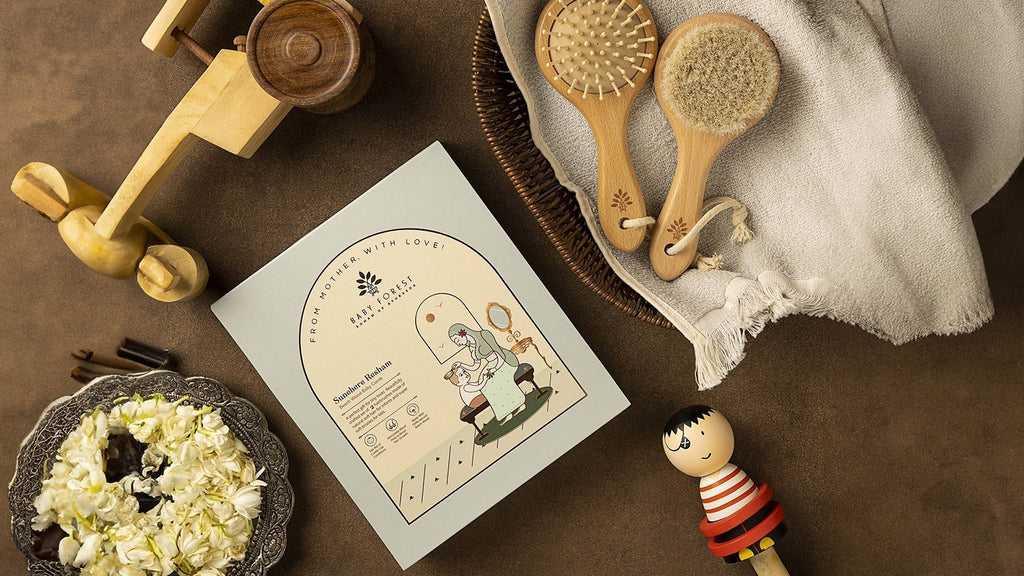
The Importance of Using a Gentle Comb for Your Baby's Hair
Infant hair care is more than a simple grooming routine; it's an essential part of their overall health and well-being. Babies' hair and scalp are very delicate, and they require gentle care to prevent discomfort or harm. This article will explain why using a gentle comb for your baby's hair is crucial, highlight the risks associated with regular combs, and outline the features and benefits of a gentle baby comb.
Understanding Baby's Hair and Scalp
Baby’s scalp is sensitive, and their hair is fine and fragile. Their skin and hair are still developing and can be easily irritated by rough handling or harsh materials. A baby's scalp can also be prone to conditions like cradle cap, which involves patchy, scaly skin. Hence, gentle care is essential to avoid aggravating these conditions or causing discomfort.
The Risks of Using Regular Combs
Regular combs, designed for adults or older children, are often too harsh for a baby's tender scalp. Their hard materials and sharp teeth can scratch or irritate the skin, leading to discomfort or even skin infections. Moreover, these combs can tug at fine baby hair, causing breakage or pain during grooming.
How to Choose the Right Baby Comb
When you look at buying a baby comb, you can consider the following factors:
-
Material:
Look for natural materials like wood and soft goat hair that are safe and gentle for your baby. -
Design:
Choose a comb with rounded teeth and a comfortable handle for easy and safe grooming. -
Size:
A compact size is preferable for the precise combing of fine baby hair and for convenient storage.
Features of Baby Forest’s Gentle Baby Comb
Our gentle baby comb is designed with the baby's delicate scalp and hair in mind.
-
Super Soft Goat Hair:
Ideal for infants and kids, these bristles are gentle enough to massage the scalp without causing irritation. -
100% Natural Beech Wood:
This baby comb is not only eco-friendly but also exceptionally durable and safe for the baby. -
Specially Designed Teeth:
The teeth of the baby comb are rounded and spaced to glide through fine hair without pulling or snagging.
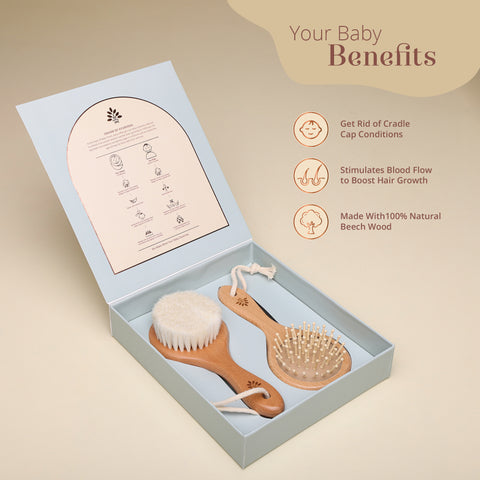
Benefits of Regularly Combing Your Baby's Hair with a Gentle Comb
Regularly combing your baby's hair with a gentle comb is more than just a routine grooming activity; it is an essential practice that offers numerous benefits for both the baby and the parent.
-
Promotes Healthy Hair Growth
Combing regularly with a soft comb aids in stimulating the scalp, which boosts blood flow to the hair roots. This stimulation promotes healthier and stronger hair growth by ensuring that the hair follicles receive ample nutrients and oxygen. Even spreading the scalp's natural oils along the hair shaft nourishes the hair, thus reducing its susceptibility to breaking.
-
Detects and Prevents Scalp Issues Early
Regular combing allows parents to closely inspect their baby's scalp regularly, making it easier to spot any potential issues such as dryness, cradle cap, or unusual spots early on. Early detection means that any conditions can be addressed promptly, preventing discomfort for the baby and potentially avoiding more serious complications.
-
Alleviates Cradle Cap
Cradle caps, characterized by scaly or crusty patches on the scalp, are common in babies. Regularly combing your baby's hair with a gentle comb can help loosen and remove these scales in a gentle manner, especially when combined with appropriate baby oil or shampoo. This keeps the baby's scalp clean and helps alleviate the symptoms of cradle cap.
Related Read - Dealing with Cradle Cap: Causes, Treatment Options, and Proactive Prevention
Combing Techniques and Tips
To make the most of your infant's hair care routine, consider these tips:
-
Gentle Approach:
Always comb gently, starting from the tips and working your way up to the roots to detangle hair without pulling. -
Regular Routine:
Make combing a part of your daily routine to keep your baby's hair neat and to monitor the health of their scalp. -
Cleanliness:
Keep the comb clean to prevent the buildup of oils or cradle cap flakes, ensuring hygiene.
Related Read - An Ideal Hair Care For Babies- What You Must Know?
ConclusionCaring for your baby's hair with a gentle hairbrush is an act of love and attention. It not only ensures their comfort but also promotes healthy hair growth and scalp health. Combing your baby's hair is a loving gesture that keeps them comfortable and supports their hair and scalp health. Choose the right newborn hairbrush and comb their hair gently, making it a soothing and bonding experience. Remember, the key is to be gentle and patient and to use the right tools to care for your baby's delicate hair and scalp.



